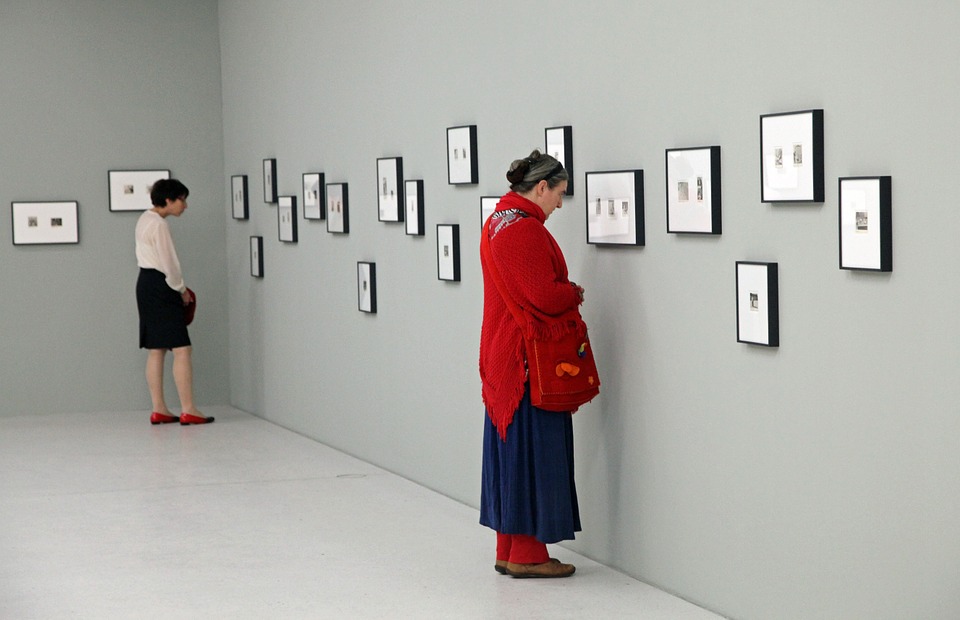News blog - artistravel international
Who Decides What Art Means?
There are countless approaches of artistic interpretation and analysis – just imagine a painting of a scenery that shows a setting sun in a reddish sky. For some people, that red indicates love and romance in the tranquillity of a landscape. For others, this is a depiction of war and death in the violence of nature. And the initial intention of use of that colour was simply… the fact that it was the artist’s favourite colour.
People who appreciate art but are not specially trained or skilled regarding analysing art, may wonder whether they have an “incorrect” interpretation of a piece of art. But can there really be such a thing as a “wrong opinion” on something? Are these two people, with their different interpretations of the colour red, wrong to have enjoyed the artwork as something the artist did not intend? Would they enjoy it less if they knew the truth behind it? In how far does the artist’s intention of the painting affect the own interpretation of a painting? Questions over questions that has been tossed around by philosophers and art critics for decades – with still no consensus in sight.
In the mid-20’s, literary critic W.K. Wimsatt and philosopher Monroe Beardsley argued that artistics intention was irrelevant and called this the “Intentional Fallacy”: the belief that valuing an artist’s intention was misguided. Their argument was twofold: First, the artists studied were no longer living with no recording of their own work’s intentions and unavailable to answer questions about their work. Second, even if there were a bounty of relevant information, Wimsatt and Beardsley believed that it would distract the spectator from the quality of the work itself. They compared art to a dessert – to put their analogy in words: When you taste a pudding, the chef’s intentions do not affect whether you enjoy its flavour or texture. All that matters, they said, is that the pudding “works”. In this context, of course, what “works” for one person might not “work” for another. And since different interpretations appeal to different people, the red in the painting could be reasonably interpreted as a depiction of love and romance, as well as one of war and death – the fact that the artist simply used his favourite colour to feel more comfortable looking at it, is just one meaning of many. By Wimsatt’s and Beardsley’s logic, the artist’s interpretation of his or her own work would therefore just be one among many equally acceptable possibilities.
There are, however, different approaches – for example the one of Steven Knapp and Walter Benn Michaels, two literary theorists who rejected the “Intentional Fallacy”. They argued that an artist’s intended meaning was not just one possible interpretation, but the only possible one. They believe that an intentional creator, meaning a person who put his or her own intention and opinion onto something, is what makes the work of art subject to understanding at all.
Others build a kind of middle ground, suggesting that intention is just one piece in a larger puzzle – as for example contemporary philosopher Noel Carrol who argued that an artist’s intentions are relevant to their audience the same way speaker’s intentions are relevant to the person they’re engaging in conversation. To understand how intentions function in conversation, Carrol said to imagine someone holding a cigarette and asking for a match. You respond by handing them a lighter, gathering that their motivation is to light their cigarette. The words they use to ask the question are important, but the intentions behind the question dictate your understanding and ultimately, your response.So, to apply this on art: The artist’s intentions are just a part of the pieces beauty. In this belief, the intention is important to understand the overall meaning, but the individual interpretation can take it elsewhere.
So which end of this spectrum do you lean towards? Do you believe that, when it comes to art, the truth should be in the pudding? Or do you think that an artist’s plans and motivations for their work, affect its meaning? Artistic interpretation is a complex web that will probably never offer a definitive answer and leaves space to argue and discuss - What is yours?
Posted in Artists, Creativity on Aug 16, 2019


